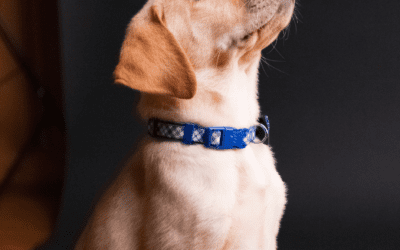Whether you’re teaching your dog the basics, or addressing behavioral issues, incorporating the 3 D’s can significantly increase your likelihood of success. The 3 D’s – Duration, Distance and Distraction – are key elements that will help you significantly in training your dog to perform any behavior… at least those that a dog is able to do!
1. Duration:
Duration refers to the length of time your dog can maintain a specific behavior. When you start training, focus on short intervals to prevent your dog from becoming frustrated. For instance… when teaching your dog to “stay”, start by asking your dog to stay for just a few seconds initially. As they become more comfortable and confident with the behavior gradually increase the duration in small increments. Remember to consistently reward your dog with treats and praise for holding the position. By slowly increasing duration you help your dog develop both patience and focus.
2. Distance:
Distance is a crucial aspect of dog training as it teaches your dog to respond to cues regardless of your physical position relative to them. When you start to train a behavior practice cues while in close proximity to your dog. As your dog gains confidence and understanding, you can gradually begin to increase the distance between you and your dog. Let’s look at the same example as above… when teaching “stay,” start with standing quite close to your dog… and as you progress you can take a couple of steps away… then gradually moving even farther. Distance training enhances your dog’s responsiveness regardless of your position, reinforcing reliability and independence.
3. Distraction:
Distractions are an inevitable part of real-life scenarios, and training your dog to remain focused while distractions are in play is crucial. Always begin training a new behavior in a controlled environment with minimal distractions, perhaps indoors, before progressing to more challenging settings like parks or crowded areas. Introduce distractions gradually (toys, other animals, noises, children, etc) to challenge your dog’s focus and impulse control. Remember to consistently reward your dog for behaviors amidst distractions. Through distraction training, your dog learns to maintain focus in diverse environments.
Here’s a quick example… if you’re training your dog to “heel” on walks, start in a quiet environment (if not indoors, you can perhaps try your backyard) with few distractions. As your dog becomes proficient, gradually introduce distractions such as cars, other dogs or children (but not all at once!). Use treats or toys to keep your dog’s attention focused on you while reinforcing the desired behavior.
By systematically introducing distractions into your dog training sessions and teaching your dog to remain focused, despite external stuff going on, you can ensure that they respond reliably to commands in any situation. This skill enhances safety (think things like recall) and strengthens the bond between you and your dog as you navigate the world together.
DON’T FORGET ABOUT GENERALIZATION:
Generalization refers to the process of teaching your dog to respond to a cue in various environments, situations, and with different distractions present… beyond the initial training environment. It helps your dog understand that the behaviors you’ve taught them apply not only at home or in dog training class, but also in real-life scenarios like parks, streets, or crowded areas. Generalization is also an essential part of ensuring your dog’s behaviors are reliable in a wide range of real-life situations, and making them a well-behaved companion both at home and in public. Check out this article to explain more about the importance of generalization.
Implementation Tips:
- Start Small: Begin with short durations, close distances, and minimal distractions, gradually increasing the difficulty over time.
- Consistency is Key: Maintain consistency in your training approach and expectations to avoid confusion.
- Positive Reinforcement: Use treats, toys and praise to motivate and reward your dog for desired behaviors.
- Patience and Persistence: Be patient and persistent, understanding that learning takes time and repetition.
- Gradual Progression: Progress through the 3 D’s gradually, ensuring your dog is confident and successful at each stage before advancing. Don’t be afraid to go back to an earlier step if your dog is having difficulties.
- Adapt to Individual Needs: Tailor your training approach to suit your dog’s personality, breed, and learning style.
Happy training all!








0 Comments